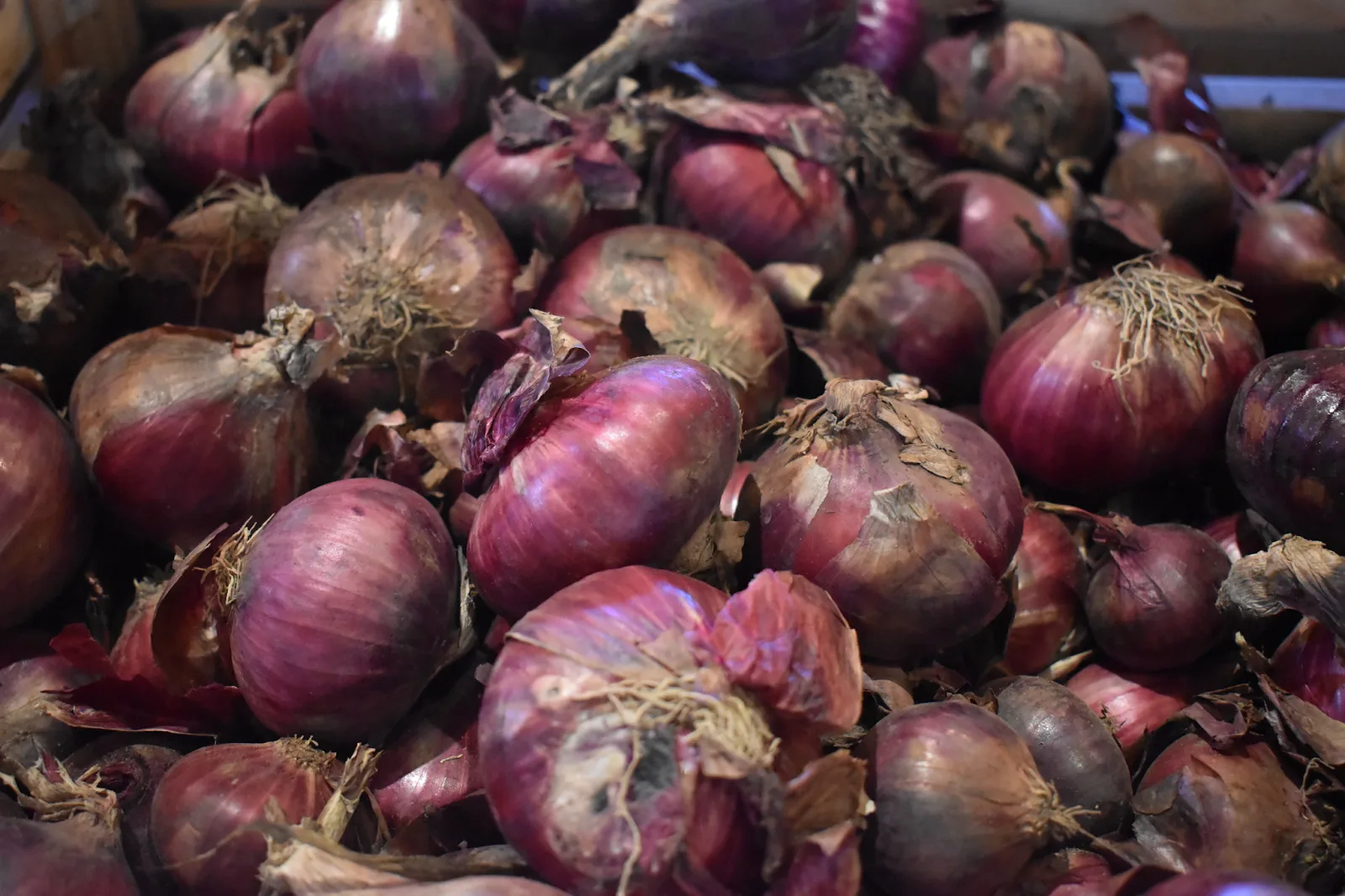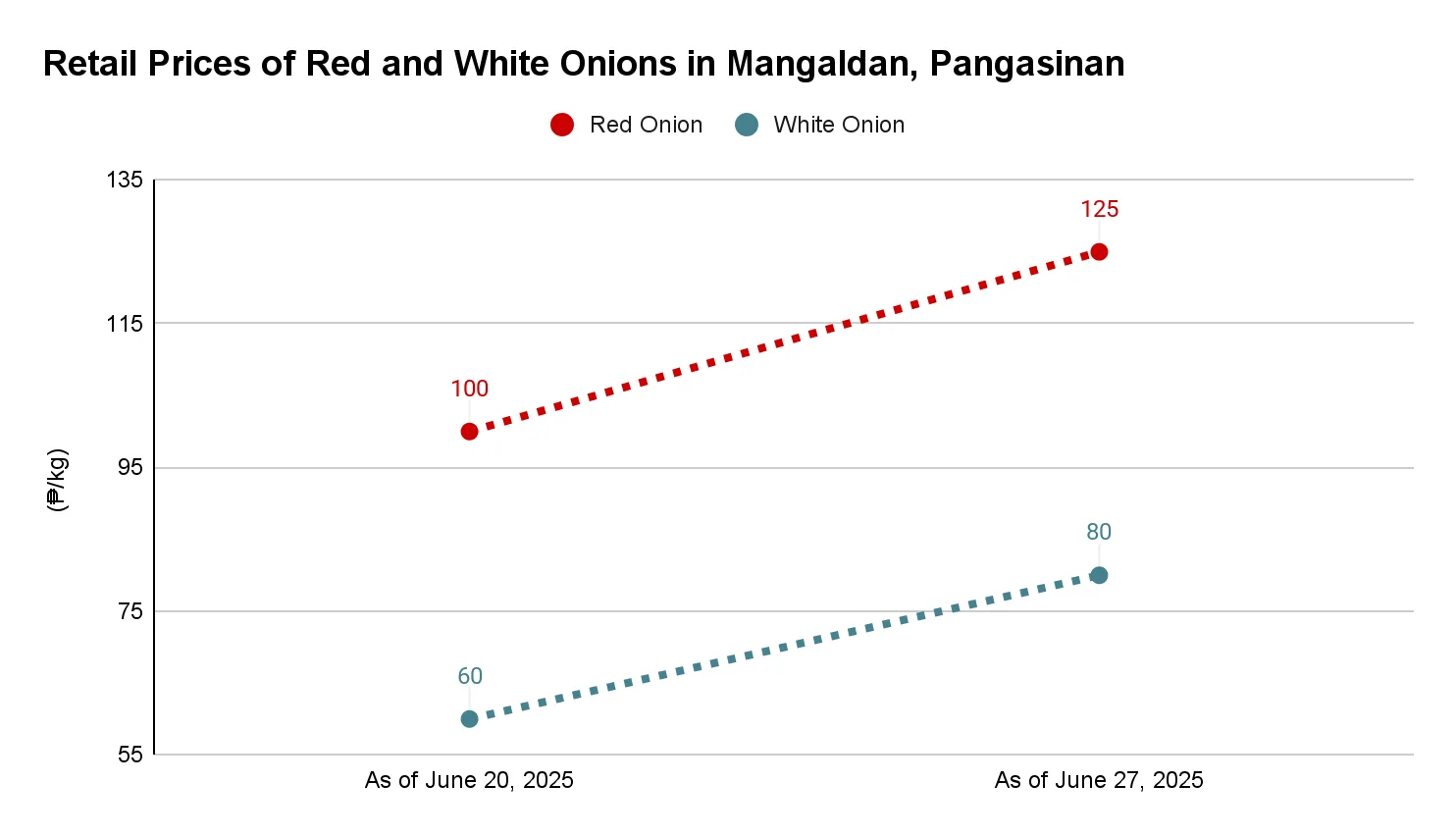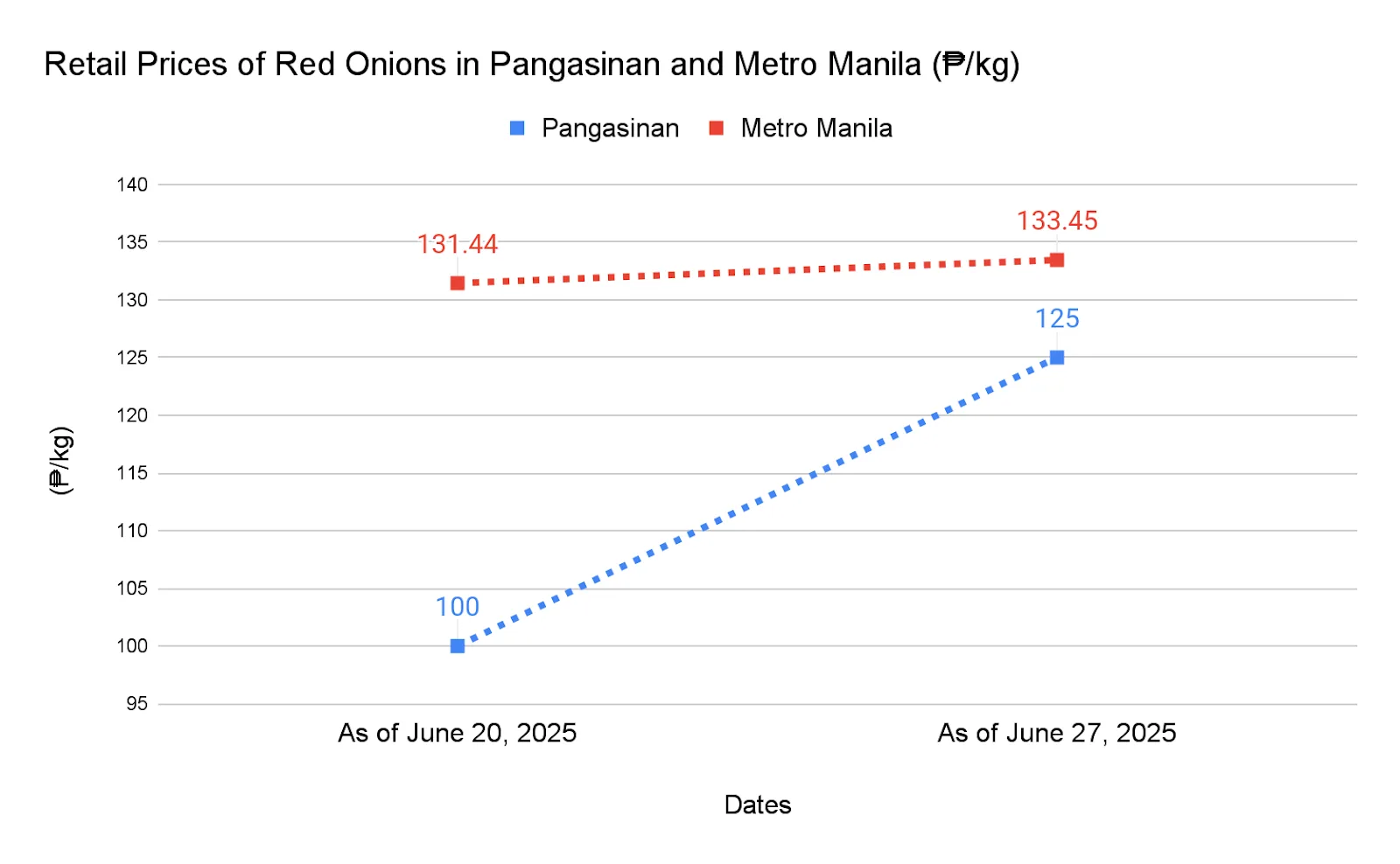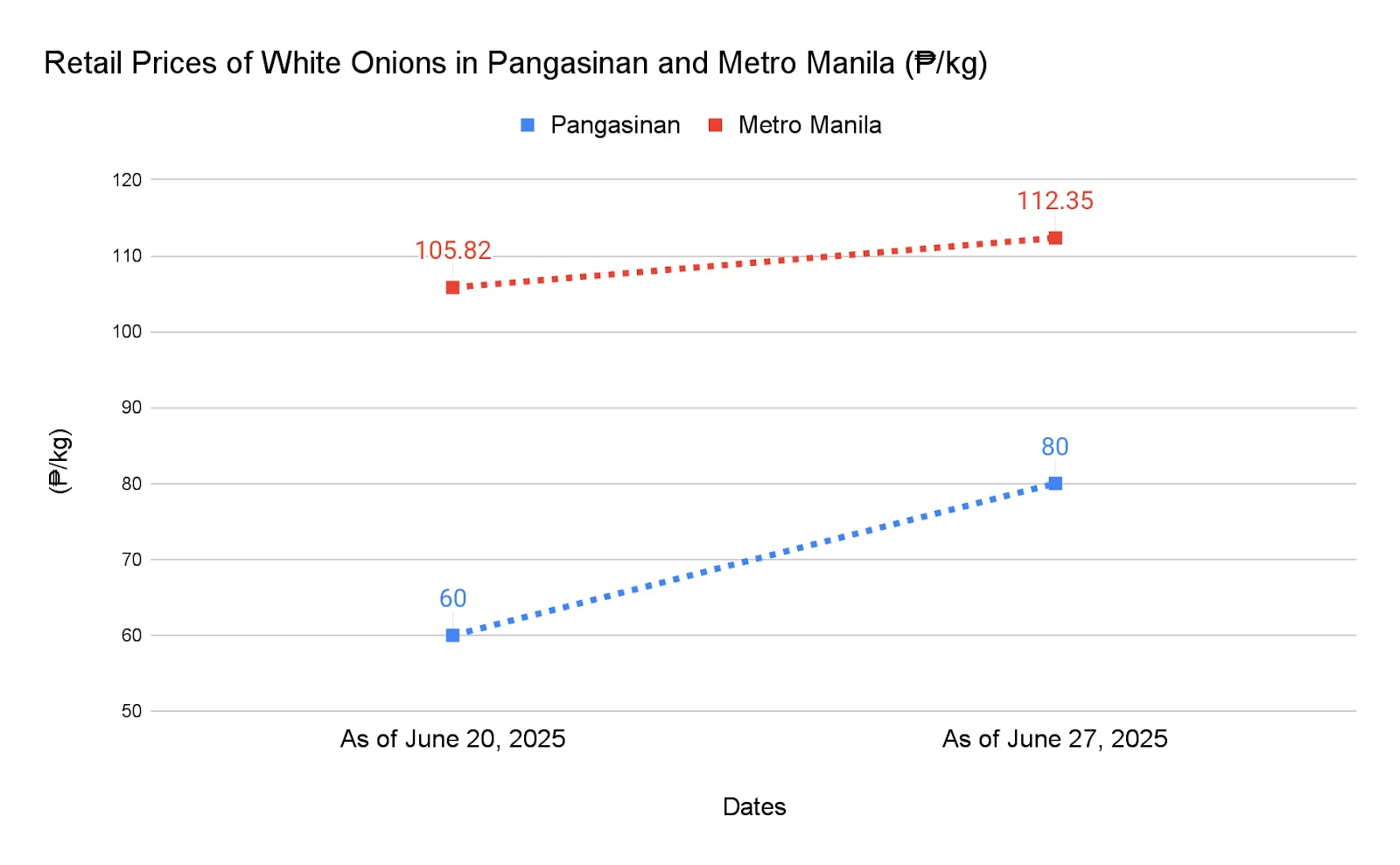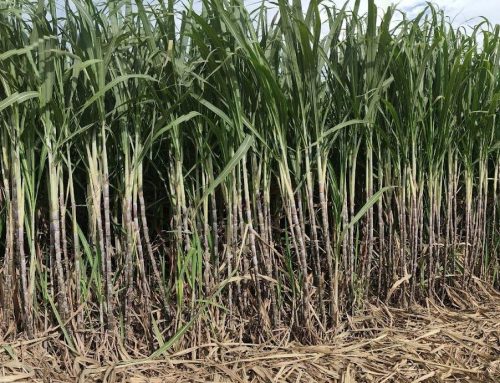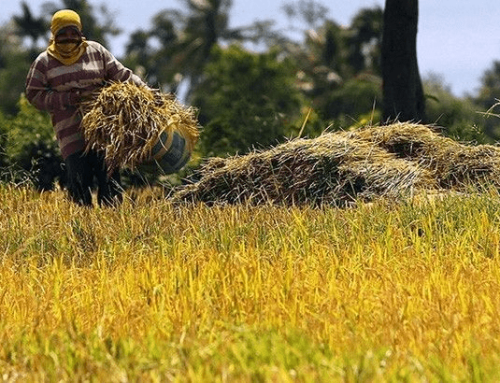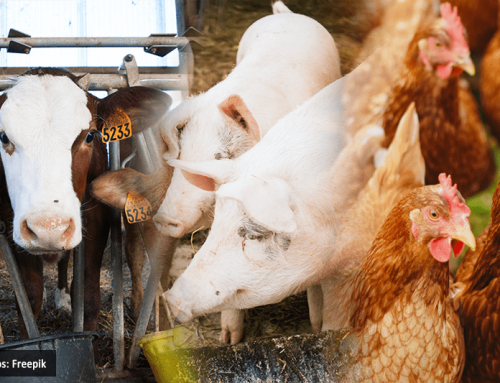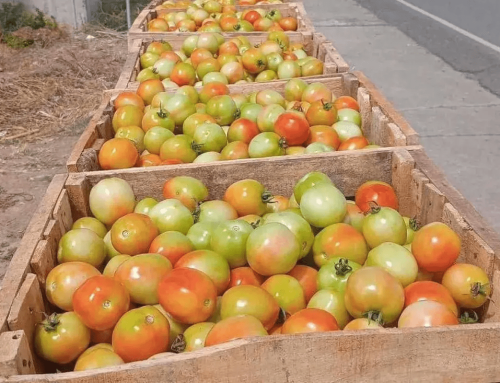In this Article
This advisory examines the recent varying increase in onion prices in Pangasinan and Metro Manila across regions, despite sufficient national supply, driven by postharvest losses and distribution inefficiencies. It explores the implications for consumers facing higher retail costs and for farmers contending with reduced earnings due to pest damage and smuggling. The article also highlights government responses, including import control measures and the implementation of a suggested retail price, alongside DOST-PCAARRD-supported innovations such as organic pesticide development and digital pest surveillance. These interventions aim to strengthen postharvest management, reduce losses, and stabilize the onion market for long-term resilience.
Onion Price Increase
The Samahang Industriya ng Agrikultura (SINAG) reported a price surge in onions sold in the public market of Mangaldan, Pangasinan, on June 27text, 2025. Prices of red onions surged by 25%, while prices of white onions increased by 33%. The increase in prices was recorded despite no reported supply shortages. According to SINAG, the local supply of both red and white onions is still sufficient, with red onion stocks expected to last until December and white onion stocks until August.
The group noted that the price surge is not a supply problem, but rather a challenge related to postharvest handling and market distribution. Sellers attributed the price increase to postharvest storage issues rather than low supply. Overstorage of onions led to spoilage, with sprouting onions becoming increasingly difficult to sell. Market vendors are raising prices on remaining quality stock to offset these losses. Consumers, in turn, are adjusting by purchasing in smaller quantities, with some limiting their purchases to just half a kilo.
Meanwhile, prices of both red and white onions in Metro Manila slightly increased during the last week of June. In Metro Manila, the prices of red onions only increased by 1.53% from ₱131.44/kg to ₱133.45/kg, while white onions increased by 6.17% from ₱105.82/kg to ₱112.35/kg. On the other hand, the prices of red and white onions in the Batong Malake Public Market in Los Baños, Laguna (a validation market), remained the same, prevailing at ₱120/kg for red onions and ₱100/kg for white onions in the same week.
Crackdown on Smuggled Onions Intensified
On June 25, 2025, the Department of Agriculture (DA) warned farmers and consumers to exercise caution following the discovery of Escherichia coli or E. coli bacteria in red onions sold at the Paco Public Market in Manila. These contaminated onions were found to have been smuggled and likely entered the country without undergoing safety checks. According to Agriculture Secretary Francisco Tiu Laurel Jr., the onions were larger than usual and did not resemble local varieties, raising concerns that they may have been imported illegally. In response, the DA has ordered the confiscation of all affected onions and instructed the Bureau of Plant Industry (BPI) to trace their sources, while the Philippine National Police (PNP) is assisting in the investigation to catch those behind the illegal trade.
Simultaneously, the DA and the Bureau of Customs (BoC) seized ₱2 million worth of red onions at the Mindanao International Container Terminal in Misamis Oriental. The shipment was misdeclared as soft drinks and is being tested for E. coli, pesticides, bacteria, and heavy metals. To protect local onion growers, no new import permits have been issued, in line with President Ferdinand Marcos Jr.’s directive. The DA is reminding retailers not to sell onions without proper documents and is advising consumers to buy only from trusted vendors. If the seized onions are proven safe, the government may distribute them to communities instead of discarding them, helping to ensure a stable supply and prevent waste.
Onion Importation Plan
On June 23, 2025, the DA was reported to be considering importing onions later this year to prevent a possible supply shortage and maintain stable prices, especially during the holiday season when demand typically increases. According to DA Assistant Secretary Arnel de Mesa, the decision will depend on the pace of inventory depletion over the next few months. As of mid-June, red onion stocks were estimated at over 85,000 metric tons (MT), with an additional 3,500 MT expected from late harvests, enough to last until November. Yellow onion stocks, however, were reported at just under 12,000 MT and projected to last only until early September.
While there is currently no immediate shortage, the DA emphasized the need to act early to avoid abrupt price spikes, similar to those experienced in previous years. Any onion importation will be carefully timed to avoid flooding the market during peak local production. The agency also assured farmers that imports will not be allowed during harvest periods and that any planned import volume will be discussed with stakeholders beforehand. This strategy is part of the government’s broader effort to balance supply, protect local producers, and keep food prices affordable for consumers.
Government Initiatives
DA Maximum Suggested Retail Price (MSRP) on Onions and Garlic
The DA will implement a maximum suggested retail price (MSRP) for onions to prevent unreasonable price increases and protect consumers from the effects of global market instability. Agriculture Secretary Francisco Tiu Laurel Jr. said the MSRP aims to keep prices within a fair range amid rising production and transportation costs caused by the ongoing conflict in the Middle East. The DA is looking to set the MSRP between ₱100/kg and ₱120/kg. The DA stressed that while a 5% to 10%price increase may be acceptable, any spike beyond this range would be closely monitored.
The agriculture chief clarified that while the MSRP will be implemented immediately, a price ceiling or cap remains an option if traders and retailers fail to comply. He assured the public that there is no shortage of onions, and that the country’s food supply remains sufficient. To manage rising input costs, the DA is also preparing to roll out a ₱150 million fuel subsidy for farmers and fisherfolk, should global oil prices reach the US$80 per barrel threshold. These measures are part of the DA’s broader efforts to ensure food affordability while supporting local producers through volatile market conditions.
DOST-PCAARRD Initiatives
Bamboo LIQUOR Ph
The Department of Science and Technology Philippine Council for Agriculture, Aquatic, and Natural Resources Research and Development (DOST-PCAARRD) funded a project led by Dr. Jennifer Tamayo of the Department of Science and Technology – Forest Products Research and Development Institute (DOST-FPRDI) to develop and validate a bamboo pyroligneous liquid (PL) formulation as an organic pesticide against onion armyworm and cutworm. In light of recent price surges caused by postharvest and pest-related losses, the initiative offers a timely, science-based solution for farmers seeking affordable and locally produced pest control. This can help reduce dependence on costly chemical inputs, lower production losses, and stabilize supply, ultimately benefiting both onion producers and consumers.
The project involves producing bamboo PL from kauayang tinik (Bambusa spinosa) and kauayang kiling (Bambusa vulgaris), optimizing its formulation, and conducting laboratory and field efficacy tests in partnership with the DA-Bureau of Plant Industry (DA-BPI). Set for completion in September 2025, the project is expected to produce a technology package for bamboo PL-based pesticide, including at least one intellectual property registration, several IEC materials, trained local cooperators, and a policy recommendation. By enabling the local production of an effective and affordable organic pesticide, the initiative supports increased productivity and profitability for onion growers, while also helping to improve the quality, safety, and availability of onions for Filipino consumers.
Surveillance and Mapping of Onion and Garlic Pests in Nueva Ecija
The DOST-PCAARRD supported a project led by Dr. Ronaldo Alberto of Central Luzon State University (CLSU) that provided farmers and local government units in Nueva Ecija with science-based tools to detect and manage leaf miner and anthracnose-twister infestations in onion and garlic farms. In place of manual scouting, the project utilized computer-based tools, UAVs, satellite imagery, spectral data, and meteorological information to map and monitor pest and disease outbreaks in real time. This approach enabled early intervention, helping prevent widespread damage and providing both productivity gains for farmers and a more stable supply for consumers.
Through cooperation with the DA’s Regional Crop Protection Center in Region 3, the project generated updated base maps and map series showing pest and disease incidence, which were turned over to municipal agriculture offices for action. Farmers in 12 municipalities in Nueva Ecija also received IEC materials, technical briefings, and advisory services. The initiative resulted in a reduction in yield losses from up to 80% to as low as 12%, highlighting the value of ICT-based surveillance in protecting crop health. A webpage was developed to house the project outputs, and plans were set to establish a pest surveillance and research center to ensure long-term benefits.
Hand Tractor-Driven Onion Harvester
To address the labor-intensive and costly process of onion harvesting, the DOST-PCAARRD funded a project led by Engr. Rosalinda Abad of Don Mariano Marcos Memorial State University (DMMMSU) aimed to develop and pilot test a hand tractor-driven onion harvester in Ilocos Norte and Ilocos Sur. Designed to be attached to an existing hand tractor commonly used for land preparation, the onion harvester helps reduce dependence on manual labor, ensures timely harvesting, and minimizes crop losses. Field-tested in three municipalities, the prototype developed under the project proved to be both technically viable and economically feasible, with potential for harvesting other root crops, such as peanuts and potatoes.
The project produced two working units, filed one patent, and generated support materials including an operator’s manual. A total of 45 farmers and six cooperatives were trained, and one accredited fabricator was engaged for possible commercial rollout. A draft version of the final design was also made available for local manufacturers. With onion harvesting accounting for up to 9% of total production costs, this initiative highlights the value of affordable, locally adaptable mechanization in boosting farm productivity and rural enterprise development.
Market Outlook
Retail prices of onions in Mangaldan, Pangasinan surged in late June 2025, with red onions increasing by 25% from ₱100/kg to ₱125/kg, while white onions rose by 33% from ₱60/kg to ₱80/kg. The observed price movements, despite reports of adequate supply, coincided with the sprouting of onions due to prolonged storage, suggesting potential challenges in postharvest storage and distribution. Meanwhile, price movements in other markets were more modest. In Metro Manila, red onion prices rose by only 1.53% from ₱131.44/kg to ₱133.45/kg, and white onions by 6.17% from ₱105.82/kg to ₱112.35/kg. Prices in Batong Malake Public Market remained unchanged. For consumers, the price increase has reduced purchasing power, prompting households to buy onions in smaller quantities and raising concerns about affordability. Vendors pointed to spoilage from over-storage as a key factor behind the reduced availability of marketable onions. With white onion stocks projected to last only until August, supply-side disruptions could intensify, risking broader price instability across local markets.
For farmers, higher retail prices do not necessarily translate to better earnings. Postharvest losses, pest outbreaks, and competition from smuggled onions continue to cut into their margins. The DA’s crackdown on illegal imports and suspension of new import permits may offer temporary protection, but deeper reforms are needed to address the root causes of price volatility. Initiatives supported by DOST-PCAARRD, such as the bamboo-based organic pesticide, digital pest surveillance tools in Nueva Ecija, and hand tractor-driven onion harvester in the Ilocos region, provide valuable solutions to reduce production losses and enhance crop quality. However, farmers can only fully benefit if these technologies are widely adopted and supported by investments in cold storage, market coordination, and timely access to information. Without these structural improvements, both consumers and producers will continue to bear the cost of an inefficient and fragile onion market.
References
Arcalas, J.E. (2025, June 19). DA, PNP intensify drive vs onion smuggling. PhilStar. Retrieved June 19, 2025 from https://www.philstar.com/headlines/2025/06/19/2451598/da-pnp-intensify-drive-vs-onion-smuggling
Arcalas, J.E. (2025, June 26). DA to implement maximum SRP for onion, garlic. PhilStar. Retrieved June 26, 2025 from https://www.philstar.com/headlines/2025/06/26/2453443/da-implement-maximum-srp-onion-garlic
Domingo, O. (2019, May 3). Protecting Onion and Garlic from Infestation through SMART ICT Applications. DOST-PCAARRD Portal. Retrieved July 1, 2025 from https://pcaarrd.dost.gov.ph/index.php/quick-information-dispatch-qid-articles/protecting-onion-and-garlic-from-infestation-through-smart-ict-applications
Gabriel-Galban, J. (2025, June 27). Onion prices go up despite stable supply. GMA Integrated News. Retrieved June 27, 2025 from https://www.gmanetwork.com/regionaltv/news/108837/onion-prices-go-up-despite-stable-supply/story/?utm_source=chatgpt.com/
Gorit, G.L. & Boton, C. (2025, June 25). P2 million smuggled onions seized in Misamis. PhilStar. Retrieved June 25, 2025 from https://www.philstar.com/nation/2025/06/25/2453078/p2-million-smuggled-onions-seized-misamis
Lagare, J.B. (2025, June 26). DA: Beware of contaminated smuggled onions. Philippine Daily Inquirer. Retrieved June 26, 2025 from https://newsinfo.inquirer.net/2074668/da-beware-of-contaminated-smuggled-onions
Pelonia, A. (2025, June 23). Onion importation set to avoid shortage. Business Mirror. Retrieved June 23, 2025 from https://businessmirror.com.ph/2025/06/23/onion-importation-set-to-avoid-shortage/

